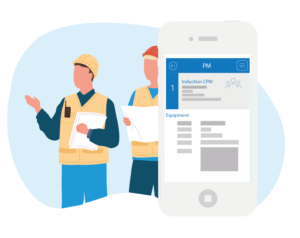Next Generation: How to Attract and Keep Millennial Renters
The following is a guest blog post from Abodo:
In recent months, many have suggested that homeownership may be the more budget-friendly option for Millennials. But, with increasing rents and student debtto service, it seems as if that down payment has become one of the biggest hurdles to homeownership for this demographic. Even as wages begin to improve, many Millennials still find themselves unable to commit large amounts of their income to saving for such a significant purchase.
While the U.S. median house price is $292,000, a buyer’s preferred city may make that significantly higher. For many renters, the idea of moving from their amenity-filled rental into a home that might be a bit worse for the wear is not appealing. So what are Millennials looking for in a home?
Getting to Know Millennials
It is important to note that this is a generation that has grown up with mobile-connected devices and pervasive social media, as well as an increasing sense of community. These are a generation of individuals who are comfortable publically sharing their daily activities, prefer to eat out, love their pets and rarely write a check. That social media aspect also means they are always connected, talking about their experiences with brands, products and services.
Tech is in their DNA, as evident in their continuous reliance on their smart phones. According to a 2014 Nielsen report, over 85% of this group own smartphones – compared to 71% of the general population, which enable them to do many daily activities with the tap of an app. With this love of technology, renters see their homes as an extension of their connectivity and demand environments that satisfy their need for fast, untethered internet access. But this reliance on technology is balanced by a strong craving for valuable personal and social experiences. So how can your reach your audience?
Connecting with Prospective Millennial Renters
Targeting your marketing to Millennials means reaching out to them where they search, via their smartphones and social media. Therefore, you want to take advantage of opportunities to get your message into these channels, using websites and mobile apps that cater to this young demographic. Additionally, your listings need to target this very visual generation with compelling property, unit and floorplan images. Immersive listings, such as those including 3D walkthroughs of your community, are more likely to convert a prospect into a customer.
Communication style is also important. Millennials favor authenticity and plain talk over salesmanship. A rental listing that appears to overstate the quality or amenities of a property can be a turnoff to prospects and cause lower conversion rates for your listing online and during a unit showing.
Convenience is also critical, so consider making rent payments and applications as simple as possible. Since these renters tend to avoid traditional checkbooks, think about adding electronic methods of rent payment, including ACH, credit or debit card. Other processes that can be put online include rent reminders, service notifications and maintenance orders, essentially providing a 24/7 leasing office for your potential and current residents.
Compelling Amenities for Millennials
According to a 2015 Millennial Renter Survey by ABODO, young renters are most likely to seek common amenities such as ample parking, in-unit laundry and utilities included. Beyond the basics, there is a strong interest in controlled building access, easy access to public transportation and outdoor unit space, including balcony, deck or patio.
Millennials are often willing to forgo larger living spaces, in favor of social gathering places within their complex. Outdoor space is key, especially in urban settings. Roof-top gardens, spaces for grilling, entertainment areas and quiet areas for reading and meditation are all part of a sense of community.
Consider that share community space will also be a draw, so find those areas that can become cozy places to gather. These gathering places can also be flex-use spaces transformed from social spaces into yoga or fitness areas by simply moving furniture around. For a relatively low cost, you can bring in local yoga or fitness instructors to lead weekly or monthly classes.
Signaling your community’s attention to detail can be quite cost-effective. For example, adding USB charging stations in common areas, such as the kitchen, bedroom and living room can add a measure of convenience and provide an enhanced customer experience. It might seem like a small thing, but it can have a big impact. Fast internet speeds throughout the community, as well as quality cell reception that can be improved with hardware on the premises, are also big pluses.
Finally, remember that the outlook for purchasing will continue to remain financially challenging for this group. Therefore, make your community tech-friendly and open to gathering and socializing. By doing so, you will be able to offer more than your competition to these potential residents and make them current members of your community.
About the Author
Michael Taus is the Head of Growth at ABODO, an innovative apartment search platform that caters to college students and young professionals. When he’s not thinking about how to make renting easier for Millennials, he enjoys exploring the great outdoors with his wife and daughters.
Affordable Housing Asset Manager Insights: Maximize Portfolio Performance by Supporting Housing Operators
From rising operational costs to increased demand for flexibility and technology, asset managers are navigating unique challenges to support property management teams while ensuring portfolio health and resilience. Recent MRI research delves into the…

